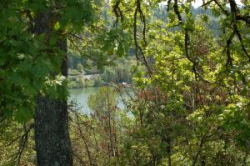Water Resource Area Functions
Streams and wetlands and the associated vegetated areas (riparian areas) provide numerous benefits for people and wildlife:
Maintaining water quality. Wetlands are nature's water filters and sponges. They cleanse water by filtering or settling sediment and absorbing and breaking down excess nutrients and toxic substances. The vegetated areas along streams also filter pollutants that would otherwise reach the stream. This helps to maintain water quality at levels that will sustain fish and wildlife and that are safe for people to play in.
Flood mitigation. Wetlands and the vegetated areas around streams absorb and store storm water that might otherwise result in flooding and erosion.
Wildlife habitat. Wetlands and riparian areas provide a variety of habitats that support birds, mammals, amphibians and fish. Riparian areas along streams produce trees that eventually fall into the stream where they form pools and provide shelter for rearing fish. The vegetation also shades the water body which helps to maintain water temperatures needed to sustain fish and other aquatic life.
Recreation. Wetlands and stream corridors provide open space, scenic areas and, in some instances, recreational opportunities such as hiking and wildlife viewing.

